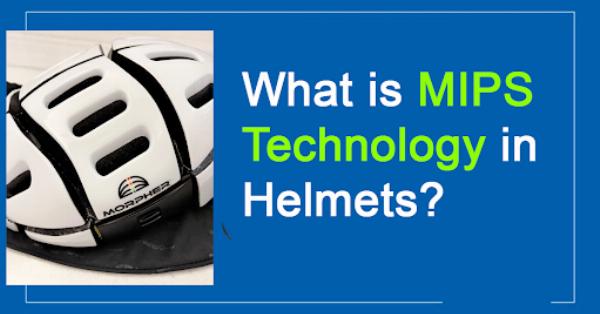What is MIPS technology in helmets?

Strong 8k brings an ultra-HD IPTV experience to your living room and your pocket.
A revolutionary innovation in helmet technology, the Multi-directional Impact Protection System (MIPS) handles rotational forces during impacts. Morpher Helmet claims that conventional helmets are not as good at mitigating rotational motion as they are at mitigating linear impacts. By lowering the amount of damaging rotational forces that are transmitted to the brain, MIPS technology provides a remedy. It does this by minimizing rotational motion, addressing rotational forces, designing with brain protection in mind, and reducing rotational motion. MIPS technology is revolutionizing safety standards in a variety of sports and activities. It has undergone extensive testing and is compatible with different types of helmets.
Design
MIPS helmets have a revolutionary design with a low-friction layer, made of elastomeric polymers, positioned between the outer shell and inner padding. This layer allows the helmet to rotate slightly upon impact with an angle, mimicking the way the brain protects itself. Traditional helmets lack this feature. Morpher Helmet says that by incorporating rotational elements, MIPS technology enhances the helmet's ability to reduce harmful forces transmitted to the brain, thereby potentially lowering the risk of traumatic brain injuries.
Rotational Elements
The importance of MIPS technology is that it is capable of dealing with rotational forces in head injuries. In activities like cycling or skiing, where oblique falls are possible, rotational forces are generated, causing the brain to twist or rotate inside the skull.
This can lead to strains and shearing of brain tissues, resulting in diffuse axonal injuries and concussions.
MIPS technology focuses on reducing the impact of these rotational forces by enabling controlled rotational movement within the helmet upon impact.
Diminished Rotational Motion
MIPS technology seeks to decrease the rotational motion in the head during impacts. A layer with low friction in MIPS helmets enables controlled sliding between the outer shell and inner liner. This allows the helmet to rotate slightly, absorbing and redirecting some of the impact's rotational energy.
By mitigating strain on brain tissues, MIPS could reduce the extent of brain injuries.
One of the main ways that MIPS technology improves helmet safety is by reducing rotational motion.
Protecting the Brain
MIPS technology enhances helmet protection by dealing with rotational forces that conventional helmets are unable to handle. It adds a layer of defense against rotational motion, reducing the risk of traumatic brain injuries like concussions.
This is especially important in sports and activities where such impacts are common, providing an additional level of brain protection.
MIPS-equipped helmets are excellent at safeguarding against rotational as well as linear impacts, ensuring overall safety.
Tested independently
MIPS technology goes through thorough and impartial testing to verify its effectiveness in reducing rotational forces. Third-party organizations and regulatory bodies simulate diverse impact scenarios and head movements to assess how well MIPS-equipped helmets perform in real-world situations.
This independent testing ensures the helmets meet safety standards and
provide reliable protection, instilling confidence in their ability to enhance safety across activities and sports.
Compatibility
MIPS technology offers versatile and compatible benefits for different helmet designs and sports equipment. It can be incorporated into different kinds of helmets, such as those used for cycling, skiing, snowboarding, and motorcycling. Athletes and enthusiasts in different sports can enjoy the enhanced safety features of MIPS technology.
In a variety of recreational and occupational contexts, this integration guarantees uniform protection against rotational forces and raises the bar for overall helmet safety standards.
Effectiveness Across Impact Types
MIPS technology is effective not only against rotational forces but also in improving protection against different kinds of impacts. Conventional helmets are better at deflecting direct hits, but they do not perform as well when there are oblique hits or forces acting in multiple directions. By lowering the rotational and linear forces transmitted to the brain, MIPS-equipped helmets provide a more thorough approach to head protection and increase safety in a variety of impact situations.
Because of their adaptability, they can be used for a wide variety of sports and activities and offer sturdy, dependable head protection.
Conclusion
In conclusion, MIPS technology is a game-changer in helmet safety, specifically in addressing rotational forces that cause brain injuries. Its innovative design reduces rotational motion upon impact, revolutionizing helmet effectiveness across various sports. Morpher Helmet concluded that MIPS allows controlled movement, enhances brain protection, and offers athletes more confidence. Rigorous independent tests confirm the efficacy of MIPS-equipped helmets, meeting safety standards. Integrated into various helmet designs, from cycling to skiing and motorcycling, MIPS is essential in modern helmet engineering for safer recreational and professional activities.
Note: IndiBlogHub features both user-submitted and editorial content. We do not verify third-party contributions. Read our Disclaimer and Privacy Policyfor details.


